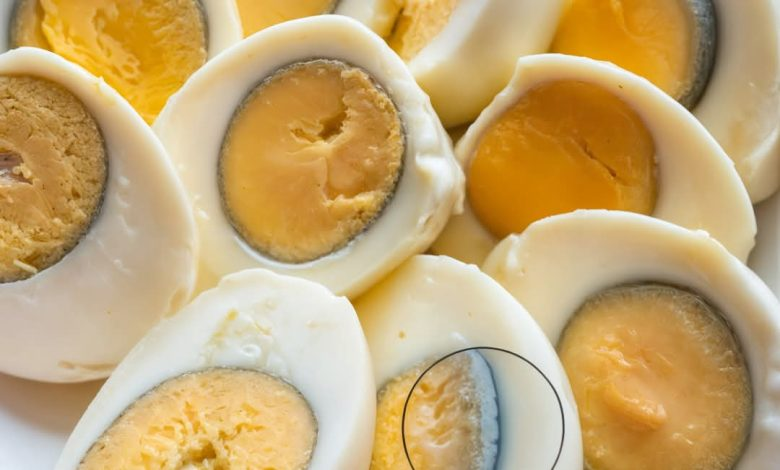
Hard-boiled eggs are a popular and versatile food used in a variety of dishes, from salads and sandwiches to a quick and nutritious snack. However, it’s common for many people to notice a greenish ring around the yolk when peeling eggs. Although this phenomenon is harmless and doesn’t affect the flavor or safety of the egg, it can be disconcerting. In this article, we’ll explore the reasons behind this greenish ring, how to prevent it, and provide a step-by-step guide to preparing perfect hard-boiled eggs.
Why does the green ring form on the yolk?
The greenish ring that appears around the yolk of hard-boiled eggs is the result of a chemical reaction between the iron present in the yolk and the sulfur found in the white. When eggs are cooked for too long or at very high temperatures, these two elements react to form iron sulfide, which gives the characteristic green hue. Although this compound is not harmful, it can affect the egg’s appearance. Fortunately, this effect can be avoided by following some simple cooking tips.
Necessary ingredients:
- Fresh eggs
- Water (enough to cover the eggs)
- Ice (optional, for an ice bath)
Instructions for preparing perfect hard-boiled eggs:
- Placing the eggs in a saucepan: Start by carefully placing the eggs in a saucepan, making sure they are not packed too tightly. This will prevent them from breaking during cooking. Next, add enough cold water to cover the eggs completely, about one to two inches above the top.
- Heat the water: Turn the heat to medium-high and bring the water to a boil. Once the water begins to boil, turn off the heat immediately.
- Cover and let stand: Cover the saucepan with a lid and let the eggs sit in the hot water for 9 to 12 minutes. The exact time will depend on the size of the eggs and how firm you prefer the yolk. For creamier yolks, opt for a shorter stand time.
- Prepare an ice bath (optional): While the eggs are resting, you can prepare an ice bath by filling a bowl with cold water and ice cubes. This step is optional, but it helps stop the cooking process quickly and makes peeling easier.
- Chill the eggs: After the resting time, use a spoon or tongs to transfer the eggs to the ice bath. Let them cool for at least 5 minutes. If you’re not using an ice bath, you can rinse the eggs under cold water to chill them.
- Peel and serve: Once the eggs are cool, carefully peel them and serve. At this point, you’ll be able to see if a greenish ring has formed around the yolk.
Serving and Storage Tips:
- Servings: Hard-boiled eggs are ideal for adding to salads, sandwiches, or as a healthy snack. You can also use them to make deviled eggs or chop them into potato salads.
- Storage: If you have leftover hard-boiled eggs, store them in the shell in the refrigerator for up to a week. Once peeled, consume them within 2 to 3 days to ensure freshness.
How to prevent the green ring:
To prevent the formation of a greenish ring, it’s crucial not to overcook eggs. Follow the recommended cooking times and be sure to cool them quickly after cooking. Also, avoid using excessively high temperatures, as this can accelerate the reaction between iron and sulfur.
In short, hard-boiled eggs are a nutritious and versatile option that can be enjoyed in many ways. With these tips, you can prepare them perfectly, avoiding the green ring and ensuring they’re ready to be incorporated into your favorite dishes. Enjoy your hard-boiled eggs with confidence and creativity!


